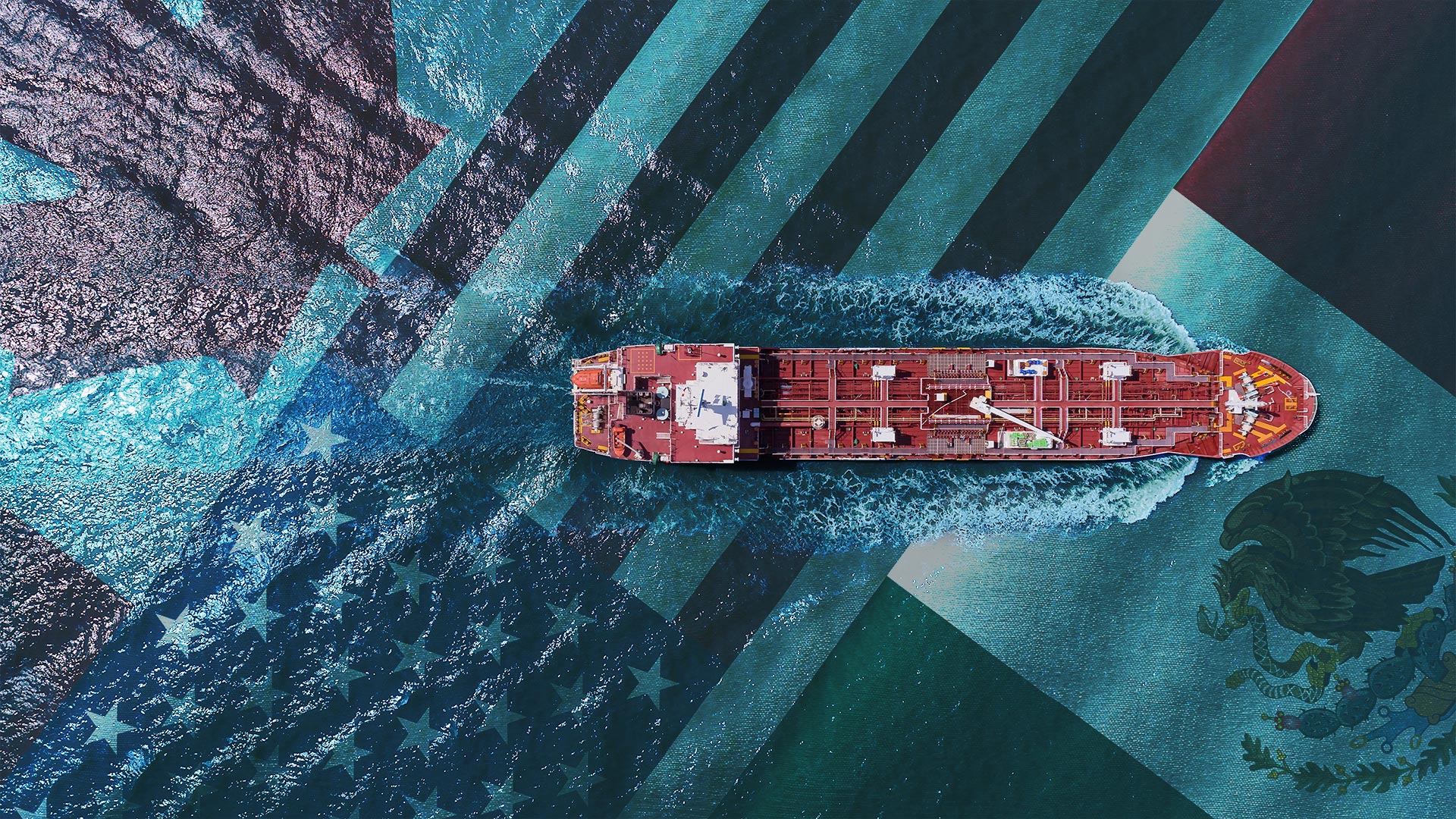
Publication
Watt’s up: Regulatory round-up
Norton Rose Fulbright provides a monthly overview of the key updates to Australian East Coast energy regulation.


Global | Publication | November 2018
On September 30, 2018, Canada, Mexico, and the United States agreed to a trilateral trade agreement called the United States-Mexico-Canada Agreement (USMCA), which is set to replace the North American Free Trade Agreement (NAFTA) on January 1, 2020.
Here is a high-level summary of some important changes relevant for the transport sector.
Chapter 7 of the USMCA (Customs and Trade Facilitation) contains several innovations likely to reduce administrative delays in cross-border trade and minimize transaction costs. For example, there are new procedures for the expedited release of goods, including provision for the advance submission and processing of electronic documentation prior to a good’s arrival at the border, as well as specific rules for the expedited handling of express shipments.
Canada increased its de minimis threshold of goods before duties and taxes apply, and all parties agreed to minimize customs procedures for shipments valued at less than $2,500. The advance rulings provisions have been modified to include, among other things, set timelines by when rulings must be issued and an expanded scope of application to include rulings on tariff classification.
There is a firm commitment to leverage technology where possible to expedite the release of goods and reduce administrative burden, including by implementing a "single window" process in each territory that offers a single point of communication and data handling to facilitate the flow of goods1. There is also a commitment to greater transparency both generally and through the mandatory publication of rules and resources relating to customs procedures.
New risk management provisions require the parties to implement risk management systems that identify and prioritize high-risk shipments for customs inspection while facilitating the release of low-risk shipments. New transit provisions also confirm that goods, vessels and other means of transport are deemed to be in transit when their journey begins and ends in another territory. While aircraft are excluded from this rule, goods on board aircraft in transit are not.
Chapter 7 also establishes a Trade Facilitation Committee with a broad mandate to discuss and recommend further measures to facilitate trade. It expressly contemplates the participation of "traders" or interested persons by implementing mechanisms in each territory to enable private parties to raise concerns about emerging issues and the administration of customs procedures.
Canada entered some important reservations to chapter 15 (Services) of the USMCA regarding the transport sector that restrict foreign inbound investment in this sector. Most of these reservations are designed to preserve and protect Canadian-owned businesses in sensitive Canadian market sectors, including air transportation services, aeronautical maintenance and repair services, maritime services and busing and trucking services. For example, Canada has preserved its right to impose restrictions on the nationality of companies entitled to provide certain commercial air transportation services, according to definitions of "Canadian" in applicable federal legislation, and has maintained reservations on authorizing non-nationals to supply specialty air services in Canada and provide aircraft and other aeronautical repair, overhaul and maintenance services.
Similarly, Canada maintained a reservation on the provision of truck or bus services between points within Canada. There are also several reservations entered restricting access to maritime shipping in Canada, such as restrictions on the ownership of vessels, restrictions on issuing certifications under the Canada Shipping Act, and restrictions on issuing licences and certificates relating to pilotage. Canada also reserved the right to adopt or maintain any measure affecting the investment in or supply of marine cabotage services.
The parties did agree to establish a Committee on Transportation Services to discuss issues arising from the implementation and operation of the parties’ obligations related to transportation services and investment, among others. Private sector entities may, by invitation, attend committee meetings.
Canada has withdrawn from the procurement provisions of the USMCA. Chapter 13 (Procurement) of the USMCA will apply only as between the US and Mexico. Procurement as between Canada and the US will be governed by the WTO Agreement on Government Procurement, which contains higher thresholds for covered procurements. The government procurement obligations between Canada and Mexico will be governed by the procurement provisions of the Comprehensive and Progressive Agreement for Trans-Pacific Partnership (CPTPP) when that treaty enters into force, on December 30, 2018.
Importantly, the USMCA parties failed to negotiate any understanding regarding US government use of "Buy America"/"Buy American" rules that, among other things, place constraints on federally funded transit projects in sourcing iron, steel and manufactured goods (including rolling stock) outside of the US.
It remains to be seen whether the current U.S. administration’s "Buy American and Hire American" policy, articulated in a presidential executive order issued on April 18, 2017, will result in a further tightening of access to US transit and other government-funded projects for Canadian companies through its admonition to limit the use of waivers and apply "Buy American"/"Buy America" rigorously.
Canada has also withdrawn from the investor-state dispute settlement (ISDS) mechanism in Chapter 14 of the USMCA, which replaces NAFTA Chapter 11. Transport sector entities are among the investors that have used NAFTA’s ISDS provisions to seek to enforce the investment obligations of the NAFTA parties. The NAFTA Chapter 11 claim brought last year by a collection of US investors and enterprises in the railroad and railway services sector against the Government of Canada for measures alleged to have been taken by Canada and the Government of Manitoba regarding their interests in the Hudson Bay Railway provides a good example.
However, beyond an allowance for pending claims already submitted to arbitration and a three-year period carved out for "legacy investment claims," US investors in Canada and Canadian investors in the US will be left without a direct means of enforcing the parties’ investment commitments. Once the CPTPP enters into force, ISDS will be available as between Canada and Mexico under the terms of that treaty, and a more limited ISDS mechanism will remain in place as between the US and Mexico under chapter 14 of the USMCA.
The potential consequences of Canada’s withdrawal from ISDS under the USMCA are important. The transport sector is particularly sensitive to trade and investment disputes, which can have complex and unexpected implications for the flow of goods. While concluding a deal in the form of the USMCA will provide some stability for companies across the sector, the parties’ failure to make headway on dispute resolution mechanisms, including Chapter 14, presents a challenge in terms of how disputes can be dealt with going forward. Retaining the state-to-state dispute resolution chapter in USMCA chapter 31 (formerly NAFTA chapter 20) may offer cold comfort in light of the parties’ failure to reform this mechanism to enhance efficiency and compliance.2
Finally, while the parties each entered "Side Letters" regarding the tariffs threatened to be imposed by the US under Section 232 of the Trade Act of 1974 on autos and auto parts, preserving duty-free access to the US for Canadian autos and auto parts up to a maximum quota, the threat of Section 232 remains, with some uncertainty as to how the tariffs might be applied. Canada’s preservation of its right to retaliate and to seek resolution at the World Trade Organization suggests the matter is far from resolved.
The USMCA provides transport sector companies with some greater certainty over "no deal" between Canada, US and Mexico in terms of shipping volumes and routes. Some of the innovations, particularly in customs and trade facilitation, should translate into faster shipping times and a reduced administrative burden on transportation logistics companies in particular, with commensurate savings along the supply chain. The ability of logistics services companies and transport modes, especially trucking, to capitalize on some of the efficiencies in the deal may, however, depend on improvements to relevant infrastructure, such as more "FAST" lanes along the Canada-US border.
Failing to achieve a trilateral deal on particularly thorny issues such as procurement, ISDS and Section 232 tariffs suggests, however, that the stability offered by achieving a deal in the form of the USMCA could be short lived.
1 The deadline to onboard to Canada’s single-window initiative, which is being implemented in advance of entry into force of the USMCA, is January 1, 2019.
2 See, for example, In the matter of Cross-Border Trucking Services, USA-MEX-1998-2008-01, Final Report of the Panel, February 6, 2001, it took approximately a year and a half for the U.S. to implement legislation to bring it into compliance with the Panel’s recommendations.
Subscribe and stay up to date with the latest legal news, information and events . . .
© Norton Rose Fulbright LLP 2025